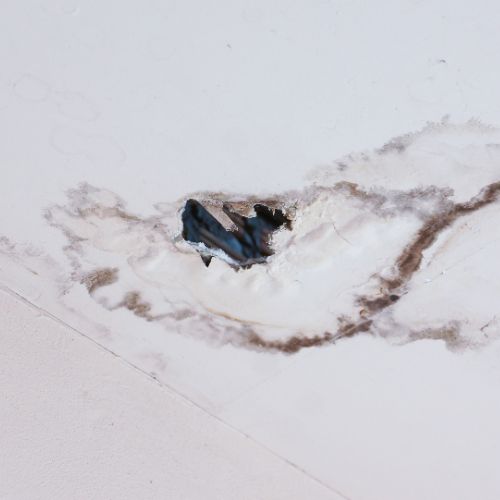Trick Considerations for an Effective Roofing Installation: Accomplishing Longevity and Performance
In beginning on the journey of roofing system setup, one must prioritize vital factors to consider to make certain both long life and performance. The option of materials, tailored to withstand local environment problems, plays an essential function in preserving structural integrity. As we discover these elements, it ends up being apparent that a successful roof installment is not just regarding covering a structure but concerning crafting a durable and sustainable solution.
Picking the Right Products

Environment plays an essential role in product option. In regions vulnerable to heavy rainfall or snow, materials like asphalt roof shingles or steel roof with high water resistance are suggested. On the other hand, in warm climates, products with reflective buildings, such as great roof covering membrane layers or ceramic tiles, can help in reducing power expenses by deflecting sunshine.
Budget plan considerations likewise influence product choice. While premium products like slate or clay floor tiles supply resilient efficiency, they include higher upfront costs. Nonetheless, they can confirm cost-efficient with time as a result of their very little maintenance requirements and extended lifespan.
Finally, the architectural design of the building should integrate with the roof material. Conventional homes might benefit from wood roof shingles, whereas modern frameworks might choose for sleek metal finishes. By thoroughly considering these factors, you can choose materials that line up with both functional and visual goals.

Comprehending Roof Design
Comprehending roof covering design is necessary in achieving a well-functioning and aesthetically pleasing structure. The layout of a roof covering impacts not just the aesthetic appeal however likewise the architectural honesty and functionality of the building. A thoughtfully created roof covering can enhance the overall architectural style while making sure reliable water drainage, insulation, and air flow.
The pitch, or slope, establishes how successfully water and debris are lost from the roof surface area, impacting the life expectancy of roof covering materials. Gable roofings are popular for their simplicity and reliable water dropping, while hip roof coverings offer phenomenal stability in high wind areas.
Architectural support systems, such as trusses and rafters, are important in dispersing weight and maintaining the roofing's honesty. Proper style makes certain that the roofing system can stand up to ecological loads and resist deformation. In addition, incorporating features like overhangs and eaves can protect the structure's façade and improve energy effectiveness by giving shade and reducing warm gain.
Eventually, a well-considered roof covering layout equilibriums form, work, and durability, adding to the long-lasting success of the setup.
Environment Factors To Consider

In hot and bright environments, roofing materials should show, as opposed to soak up, solar heat to maintain energy effectiveness and stop too much thermal development, which can lead to material deterioration - Keep Dry Roofing St Peters MO. On the other hand, in cooler areas, products have to provide adequate insulation to stop warm loss and stand up to freeze-thaw cycles that can trigger splitting and various other architectural concerns
In addition, the selection of shade and layer can significantly affect a roof's thermal performance, particularly in locations with severe temperature level variants. Regional building codes typically provide assistance on suitable materials and designs, mirroring local environment issues. For that reason, an extensive understanding of climatic conditions is indispensable for picking products and styles that guarantee a roof's optimum efficiency over its life expectancy.
Installment Best Practices
Reliable roofing system installation is a critical part of guaranteeing long-term longevity and performance. Sticking to finest practices throughout installation not just safeguards structural honesty but additionally reduces pricey future repair services. Most importantly, picking the right products is paramount. Utilizing top quality roof shingles, underlayment, and flashing tailored to the details climate and structure layout will improve the roof's durability.
Similarly vital is the prep work of the roof deck. Guaranteeing that the deck is tidy, completely dry, and structurally audio prior to installation avoids difficulties such as leakages and early wear. Proper ventilation is another essential consideration, as it alleviates wetness buildup and thermal stress and anxiety, thereby prolonging the roof's lifespan.
Accuracy in measurement and positioning during the installation process is important. This includes precise placement of shingles and meticulous attention to overlapping, which prevents water ingress. Using specialist, skilled labor ensures these standards are met, lowering the threat of mistakes that might jeopardize the roofing system's effectiveness.
Power Performance Methods
Enhancing a roofing's energy efficiency is a strategic factor to consider for lowering power costs and environmental influence. By choosing suitable products and modern technologies, house owners and contractors can significantly boost the thermal performance of a roof, hence browse around here lessening energy intake. One of the primary approaches includes using reflective roof covering materials, which disperse more sunshine and take in much less warm. This can lead to a significant reduction in cooling down expenses, specifically in warmer climates.
Additionally, the consolidation of ample insulation is crucial in stopping heat transfer between the exterior and interior of a building. Insulation materials with high R-values, such as spray foam or stiff foam boards, work in maintaining a constant interior temperature level, thereby enhancing cooling and heating system efficiency.
Additionally, the combination of photovoltaic panels on roofs not just generates renewable resource yet can additionally provide color, further decreasing warm gain (Keep Dry Roofing St Peters MO). Advancements like trendy roofs, which try these out utilize finishings to show even more sunlight, are additionally obtaining appeal for their ability to decrease roof temperatures
Conclusion
To conclude, achieving a successful roofing system installation necessitates an extensive method that integrates the selection of top quality materials see this site tailored to specific weather problems, thoughtful layout factors to consider for ideal drain and structural integrity, and adherence to thorough installment techniques. These aspects collectively ensure the avoidance of dampness build-up and thermal anxiety, thus enhancing the roof's longevity and performance. Integrating techniques to improve power effectiveness even more adds to minimizing maintenance needs and reducing energy intake over the roof covering's life expectancy.